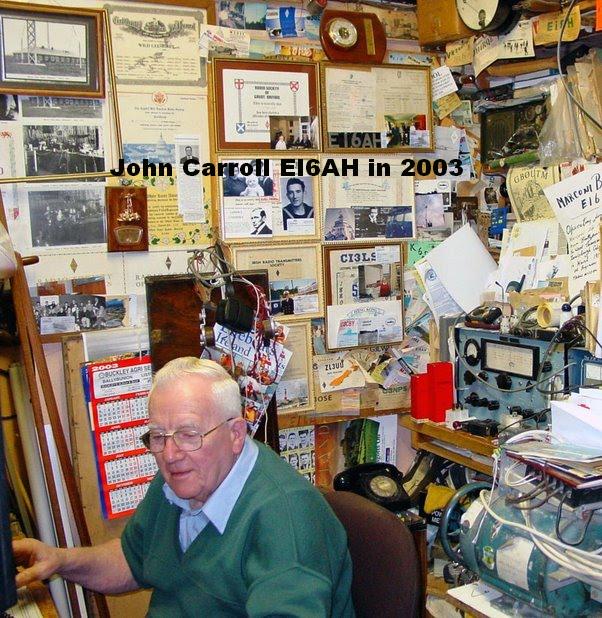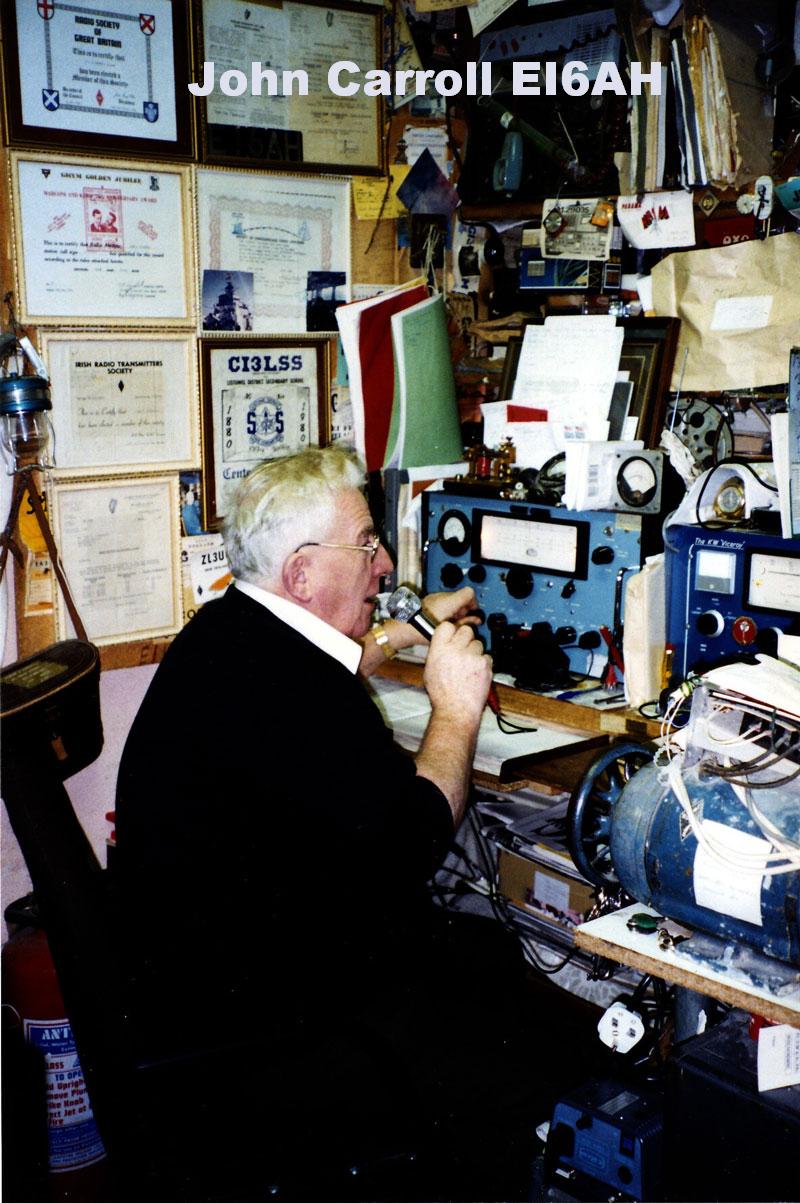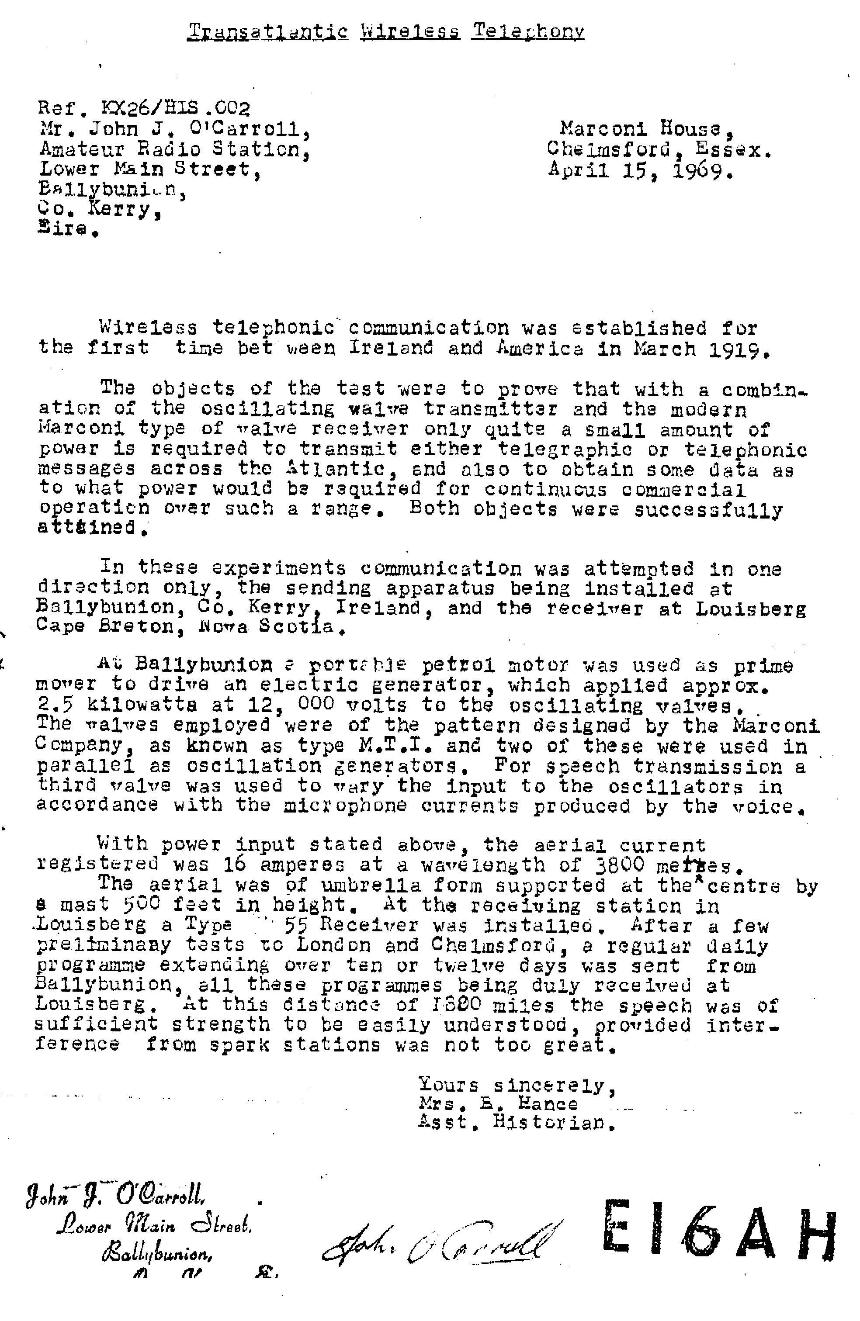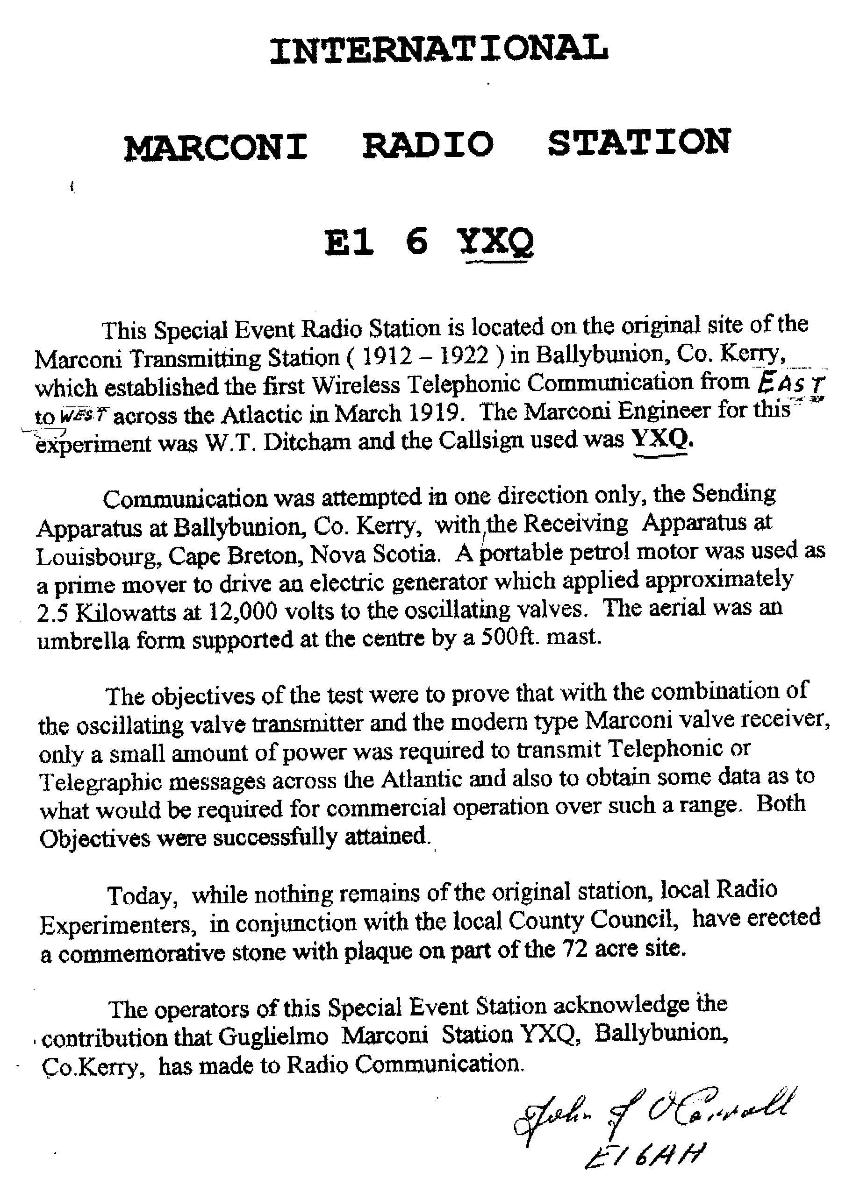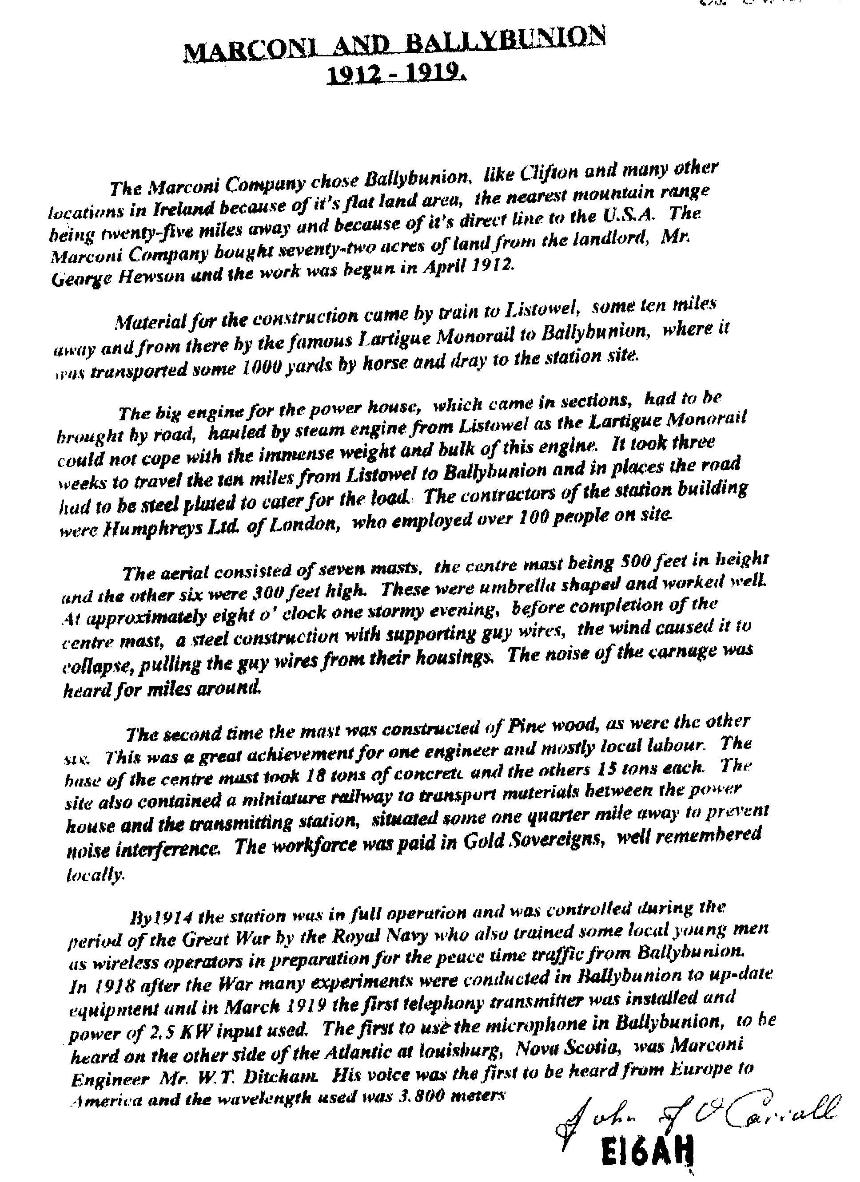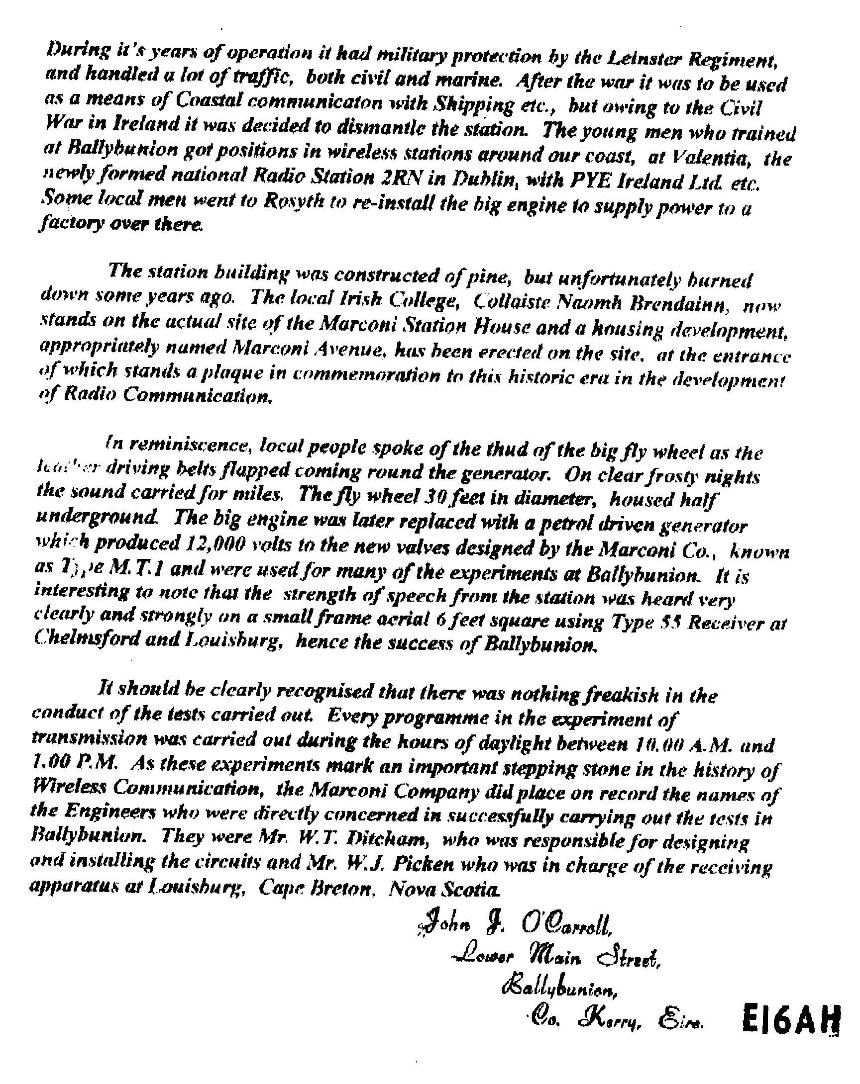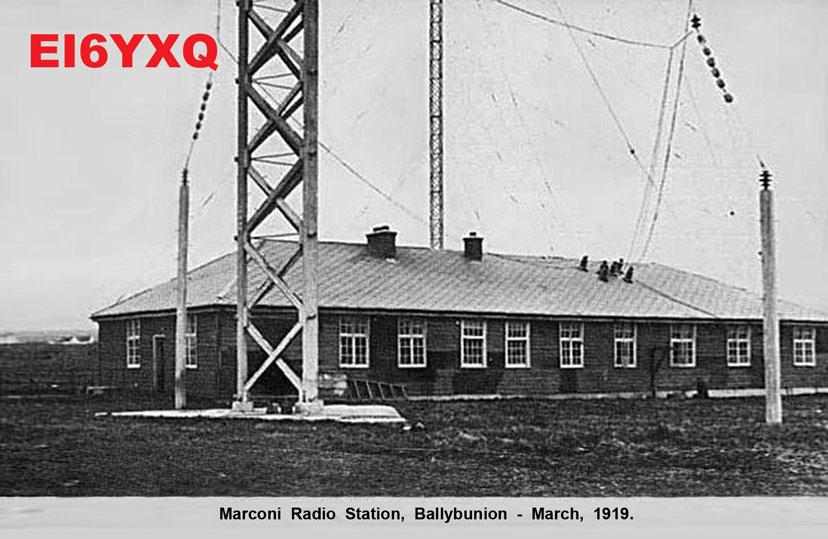

|
Who_was_Marconi.pdf Size : 11.159 Kb Type : pdf |
JJ on CJAD.mp3
==========================================================================================================================
Update:During 2019 the Special Event Call EI-100-YXQ will be on air to commemorate the 100th Anniversary of the historic event, of the first East to West voice transmissions across the Atlantic from the former Marconi radio station in Ballybunion, Co Kerry, Ireland. 19th March 2019 is the anniversary date, and on this day, KARG and others will be QRV from the site of the former Marconi radio station on all band, all modes.
More information on Marconi related history in Ballybunion, can be heard on a podcast from 30th March 2019, as follows on Radio Kerry
===========================================================================================================================
Members of Kerry Amateur Radio Group have the privilege of transmitting from the Marconi site at Ballybunion, Co. Kerry, where the very first transatlantic voice transmission was made from, at the Marconi Station in March 1919.
Members of Kerry Amateur Radio Group operate from the site of the original Marconi Station annually for International Marconi Day. Currently on the site of the original Marconi station is an Irish language residential training college called Colaiste Bhreanainn. This college offers the opportunity to boys and girls aged 11 to 17 years, to learn the native Irish language in a very encouraging, friendly and comfortable surroundings, on the edge of the bustling town of Ballybunion, County Kerry, with its fantastic beaches. KARG would like to thank the management of Colaiste Bhreanainn for their kind permission to use this fantastic location.
John J O'Carroll, EI6AH, now SK, and other Radio Experimenters have operated from this Marconi site for many years on International Marconi Day, and it is our privilege now to keep John's legacy going, by continuing to operate from this site on the annual International Marconi Day. A radio interview that John did with a Canadian broadcast radio station, can be found at the link shown above called JJ on CJAD
A little History about Marconi and Ballybunion
Site of the first east to west trans-Atlantic radio telephony transmission
From Ballybunion was established the first wireless telephonic communication from east to west across the Atlantic in March 1919 using the call sign YXQ.
Communication was attempted in one direction only with the Sending Apparatus located at Ballybunion and the Receiving Apparatus at Louisburg, Cape Breton, Nova Scotia.
Today, while nothing remains of the original station, local radio experimenters in conjunction with the local County Council, have erected a commemorative stone with plaque on part of the 72 acre site.
The Marconi Company chose Ballybunion, like Clifton and many other locations in Ireland, because of its flat land area, the nearest mountain area being twenty-five miles away, and because of its direct line to the USA.
The Company bought seventy-two acres of land from the landlord, Mr. George Hewson, and the construction work was begun in April 1912.
Material for the construction came by train from Listowel, some ten miles from the site, using the famous Lartigue Monorail to Ballybunion where it was then transported some 1000 yards by horse and dray to the station site.
The big engine for the power house, which came in sections, had to be brought by road, hauled by steam engine from Listowel because the Lartigue Monorail could not cope with the immense weight and bulk of this engine. It took three weeks to travel the ten miles from Listowel to Ballybunion, and in places the road had to be steel-plated to cater for the load. The contractors of the station building were Humphrey's Limited of London, who employed over 100 people on site.
The aerial consisted of seven masts, the center mast being 500 feet in height and the other six were 300 feet high. These were umbrella-shaped and worked well. At approximately eight o'clock one stormy evening, before completion of the center mast, the wind caused this steel construction with supporting guy wires to collapse, pulling the guy wires from their housings. The noise of the carnage was heard for miles around!
The second time, the mast was constructed of pine wood, as were the other six. This was a great achievement for one engineer and local labour. The base of the center mast took 18 tons of concrete, and the others 15 tons each. The site also contained a miniature railway to transport materials between the power house and the transmitting station, situated about one quarter of a mile away to prevent noise interference. The workforce was paid in gold sovereigns, well remembered locally.
By 1914, the station was in full operation and was controlled during the period of the Great War by the Royal Navy who also trained some local young men as wireless operators in preparation for peacetime traffic from Ballybunion.
In 1918, after the end of the War, many experiments were conducted at Ballybunion to update equipment and in March 1919 the first telephony transmitter was installed using a power of 2.5 Kwatts. The first person to use the microphone from Ballybunion and be heard on the other side of the Atlantic in Nova Scotia, was Marconi engineer Mr. W.T.Ditcham. His voice was the first to be heard from Europe to America, and the wavelength was 3,800 Metres.
Communication was attempted in one direction only with the transmitter at Ballybunion and the receiver at Louisburg, Cape Breton, Nova Scotia.
The principal objective of the test was to prove that with the combination of the oscillating valve transmitter and the modern Marconi valve receiver, only a small amount of power was required to transmit telephonic or telegraphic messages across the Atlantic.
The tests also provided some data on what would be required for commercial operation over such a range. The objectives were successfully attained.
During its years of operation, Ballybunion had military protection by the Leinster Regiment, handling a lot of traffic - both civil and marine. After the war it was to be used as a means of coastal communication with shipping etc, but owing to the Civil War in Ireland, it was decided to dismantle the station.
The young men who trained at Ballybunion got positions in wireless stations around the Irish coast, including Valencia; the newly-formed radio station 2RN in Dublin; PYE Ireland Limited etc. Some local men went to Rosyth in Scotland to re-install the big engine to supply power to a factory over there.
The station building was constructed with pine and unfortunately it burnt down many years ago. The local Irish College, Collaiste Naomh Brendainn, now stands on the actual site of the Marconi Station House, and a housing development - appropriately named Marconi Avenue - has been erected on the site. At the entrance to the site now stands a plaque in commemoration to this historic era in the development of radio communication.
In reminiscence, local people speak of the thud of the big flywheel and of the leather drive belts that flapped as they drove the generator. On clear, frosty nights the sound carried for miles. The flywheel - 30 feet in diameter - was housed half underground.
The big engine was later replaced with a petrol driven generator which produced 12,000 volts for the new valves designed by the Marconi Company, known as the Type M.T.I and which were used for many of the experiments at Ballybunion.
It is interesting to note that the signal from the station was heard very clearly via a small frame aerial 6 feet square using a Type 55 Receiver at Chelmsford and Louisburg. A tribute perhaps to the success of the Ballybunion transmitter.
It should be clearly recognised that there was nothing "freakish" in the conduct of the tests carried out at Ballybunion. Every programme in each transmission experiment was carried out during the hours of daylight between 10.00 AM and 1.00 PM. As the experiments mark an important stepping stone in the history of wireless communication, the Marconi Company placed on record the names of the engineers who were directly concerned in successfully carrying out the tests at Ballybunion. They were Mr. W.T.Ditcham who was responsible for designing and installing the circuits, and Mr. W.J.Picken who was in charge of the receiving apparatus at Louisburg, Cape Breton, Nova Scotia
jJohn J O'Carroll, EI6AH - Now SK - Ar dheis D?? go raibh a anam
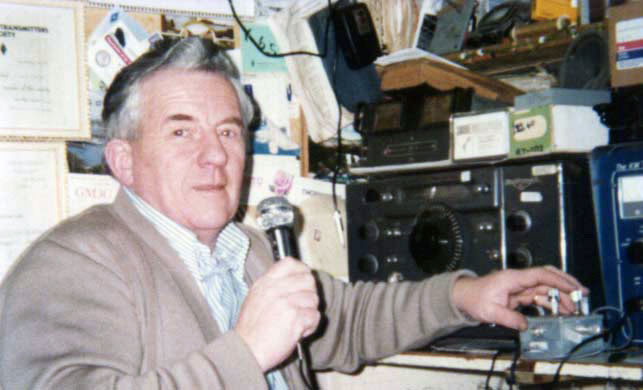
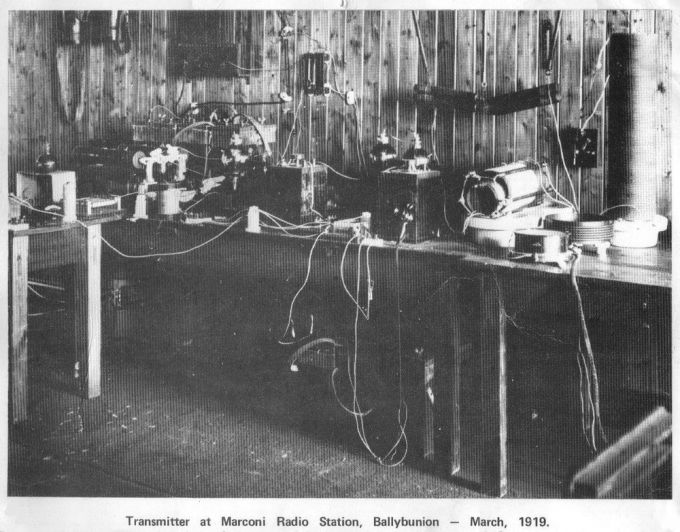
.jpg)
.jpg)
